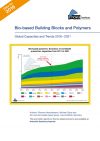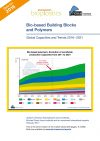Showing 241–260 of 423
-
Sustainable First and Second Generation Bioethanol for Europe − Full version
Policy, Sustainability & Health
43 Pages
1612 Downloads
1612 Downloads
2017-11
FREE
1612
Downloads -
Sustainable First and Second Generation Bioethanol for Europe − Short version
Policy, Sustainability & Health
12 Pages
1797 Downloads
1797 Downloads
2017-09
FREE
1797
Downloads -
2017-07
100 € – 500 €Price range: 100 € through 500 € ex. tax
Plus 19% MwSt.Press
release Select
licenceCommercialisation and development of novel bio-based building blocks are discussed in detail in nova-Institute’s new trend report
With the many shifts in economic and political trends over the last year, many bio-based investments are focusing on the core of the Bioeconomy: bio-based building blocks and platform chemicals. nova-Institute’s preliminary market study “Bio-based Building Blocks and Polymers – Global Capacities and Trends 2016–2021”, reports on seventeen building blocks with an estimated total production capacity of 2.4 million tons in 2016, expected to reach 3.5 million tons in 2021, and with a CAGR of 8%.
Commercialisation and development of these novel building blocks are discussed in more detail in the new nova Institute trend report, “Commercialisation Updates on Bio-Based Building Blocks”. The rise and wane of the markets for several established bio-based building blocks are also discussed fully including various technology processes, feedstock usage, supply/demand, and pricing whenever available for both incumbent petrochemicals and their bio-based chemical alternatives. -
Commercialisation updates on bio-based building blocks − Short version
Markets & Economy
8 Pages
2704 Downloads
2704 Downloads
2017-07
FREE
2704
Downloads -
“InnProBio project: Informative factsheets about the most pressing issues” − Factsheet 5: Life Cycle Assessment (LCA) and Life Cycle Costing (LCC)
Markets & Economy, Policy
3 Pages
1124 Downloads
1124 Downloads
2017-07
FREE
1124
Downloads -
17 Downloads
2017-06
FREE
17
Downloads -
BIOMASSEKASKADEN Mehr Ressourceneffizienz durch Kaskadennutzung von Biomasse – von der Theorie zur Praxis − Langfassung
Sustainability & Health, Technology
134 Pages
498 Downloads
498 Downloads
2017-06
FREE
498
Downloads -
14th International Conference of the European Industrial Hemp Association 2017 − Proceedings
Markets & Economy
16 Downloads
16 Downloads
2017-06
FREE
16
Downloads -
Study on current situation and trends of the bio-based industries in Europe − Full version
Markets & Economy
213 Pages
2371 Downloads
2371 Downloads
2017-06
FREE
2371
Downloads -
2017-05
100 € – 500 €Price range: 100 € through 500 € ex. tax
Plus 19% MwSt.Press
release Select
licenceNew trend report highlights certifications and labels for bio-based and biodegradable materials for the European market. Get the latest info on possibilities for feedstock, bio-based content and end-of-life options.
It is not always easy to communicate the benefits of bio-based and/or biodegradable materials to the market. Europe is working on standards and norms as one key area to promote bio-based materials. But what do you need to get your product certified?
The new trend report “Standards and labels for bio-based products” provides a comprehensive overview and a summary of already existing certification and labelling schemes applied to bio-based materials. The certified issues include: Feedstocks used, measurable bio-based content of the products and biodegradability properties for different environments. It also looks at the latest insights into the possible connections between ecolabels, especially the EU Ecolabel, and bio-based products and what this means for producers and consumers of bio-based plastics.
-
Standards and labels for bio-based products − Preview
Sustainability & Health
4 Pages
1915 Downloads
1915 Downloads
2017-05
FREE
1915
Downloads -
4382 Downloads
2017-04
FREE
4382
Downloads -
The RED II Proposal and Its Impact on the Bio-based Material and CO2 Utilization Sector − Full version
Policy
4 Pages
599 Downloads
599 Downloads
2017-04
FREE
599
Downloads -
2017-04
100 € – 500 €Price range: 100 € through 500 € ex. tax
Plus 19% MwSt.Press
release Select
licenceThe comprehensive trend report presents latest developments, producers, drivers and lessons learnt especially for PHA, PLA, PUR/TPU, PA and polymers based on furandicarboxylic acid (FDCA) and succinic acid (SA)
The conversion from hydrocarbons to carbohydrates and CO2 as feedstock to produce chemicals and polymers becomes more significant every year. It is anticipated that bio-based chemicals like adipic acid, butanediol, furandicarboxylic acid, lactic acid and succinic acid will form bio-based chemical platforms worth more than 30 billion € by 2030. Although these chemicals are to a large extent used for polymer production, there are also other polymer related developments focusing on renewable feedstock use.
The comprehensive trend report presents latest developments, producers, drivers and lessons learnt especially for PHA, PLA, PUR/TPU, PA and polymers based on furandicarboxylic acid (FDCA) and succinic acid (SA). -
“InnProBio project: Informative factsheets about the most pressing issues” − Factsheet 4: Bio-based Products and Services in the Circular Economy
Policy
4 Pages
1183 Downloads
1183 Downloads
2017-04
FREE
1183
Downloads -
Policies impacting bio-based plastics market development and plastic bags legislation in Europe − Short version
Policy
6 Pages
1401 Downloads
1401 Downloads
2017-03
FREE
1401
Downloads -
Policies impacting bio-based plastics market development and plastic bags legislation in Europe
Policy
74 Pages

2017-03
100 € – 500 €Price range: 100 € through 500 € ex. tax
Plus 19% MwSt.Press
release Select
licenceThe newly published report looks at how different parts of the world handle the development of the bio-based plastics sector politically
New trend report highlights policies around the world and their positive and negative impacts on bio-based plastics market developments. A must read for any investor or producer – where is demand expected to increase?
The development of an innovative industrial sector is influenced by many different factors. Among others, the political framework conditions in which such a sector is built play an important role.
-
Bio-based Building Blocks and Polymers – Global Capacities and Trends 2016-2021
Markets & Economy
249 Pages

2017-02
100 € – 500 €Price range: 100 € through 500 € ex. tax
Plus 19% MwSt.Press
release Select
licenceIn 2016: 6.6 Million tonnes production capacity, 2% share of all polymers, €13 billion turnover, durable applications are dominating
The worldwide production capacity for bio-based polymers grew by 4% to 6.6 Million tonnes from 2015 to 2016. This represents a share of 2% of the global polymer market. The bio-based polymer turnover was about €13 billion worldwide in 2016 compared to €11 billion in 2014. Production capacity of bio-based polymers is forecasted to increase from 6.6 million tonnes in 2016 to 8.5 million tonnes by 2021.
-
Bio-based Building Blocks and Polymers – Global Capacities and Trends 2016-2021 − Preview
Markets & Economy
13 Pages
431 Downloads
431 Downloads
2017-02
FREE
431
Downloads -
“Bio-based Building Blocks and Polymers – Global Capacities and Trends 2016 – 2021” − Short version
Markets & Economy
24 Pages
2945 Downloads
2945 Downloads
2017-02
FREE
2945
Downloads


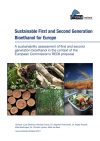
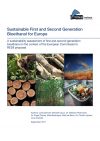
![Commercialisation updates on bio-based building blocks [Digital]](https://renewable-carbon.eu/publications/wp-content/uploads/2020/07/17-06-Commercialisation-updates-on-bio-based-building-blocks-100x141.jpg)
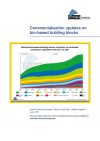
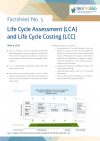
![Proceedings 10th Conference on Bio-based Materials 2017 [Digital]](https://renewable-carbon.eu/publications/wp-content/uploads/2020/05/21-01-07_RC-Publications-Cover-Proceedings_Bio-based-Materials-100x141.png)
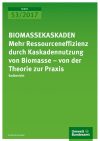
![14th International Conference of the European Industrial Hemp Association 2017 − Proceedings [Digital]](https://renewable-carbon.eu/publications/wp-content/uploads/2020/05/21-01-07_RC-Publications-Cover-Proceedings_EIHA-100x141.png)
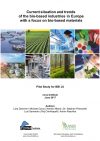
![Standards and labels for bio-based products [Digital]](https://renewable-carbon.eu/publications/wp-content/uploads/2020/08/17-05-Standards-and-labels-for-bio-based-products-100x141.jpg)
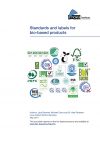
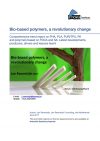
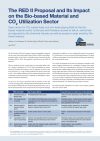
![Bio-based polymers, a revolutionary change [Digital]](https://renewable-carbon.eu/publications/wp-content/uploads/2020/08/17-04-Bio-based-polymers-a-revolutionary-change-100x141.jpg)

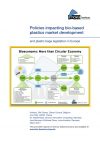
![Policies impacting bio-based plastics market development and plastic bags legislation in Europe [Digital]](https://renewable-carbon.eu/publications/wp-content/uploads/2020/08/17-03-Policies-impacting-bioplastics-100x141.jpg)
![Bio-based Building Blocks and Polymers – Global Capacities and Trends 2016-2021 [Digital]](https://renewable-carbon.eu/publications/wp-content/uploads/2020/08/17-02-20-Bio-based-Building-Blocks-and-Polymers-100x141.jpg)
